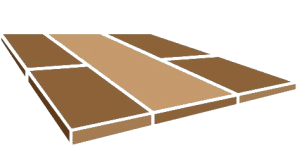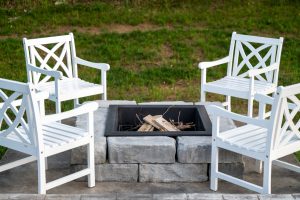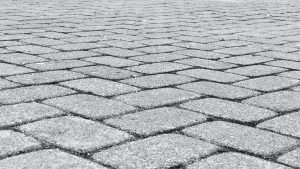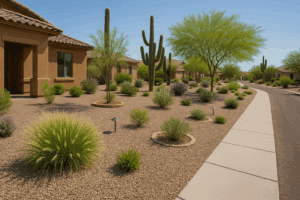Gilbert Paver Company knows that landscape architecture is both an art and a science, crucial for creating stunning outdoor spaces. Homeowners often struggle to balance beauty and functionality in their landscape design. This article will explore the art and science behind effective landscape architecture, helping you turn your outdoor area into a masterpiece.
Contents
- 1 The Fundamental Principles of Landscape Architecture
- 2 The Role of Site Analysis
- 3 The Importance of Design Planning
- 4 Choosing the Right Materials
- 5 Incorporating Water Features
- 6 Crafting Functional Outdoor Spaces
- 7 The Magic of Plant Selection
- 8 Enhancing with Lighting
- 9 Sustainability in Landscape Architecture
- 10 Benefits of Hiring a Professional
- 11 The Final Touches
The Fundamental Principles of Landscape Architecture
Understanding the basics is vital. Landscape architecture combines creativity and technical skill to design and manage outdoor spaces. First, we must grasp essential principles, such as balance, contrast, scale, and unity. Each principle works in harmony, transforming an ordinary yard into an extraordinary one.
Balance ensures that the visual weight of elements is evenly distributed. This can be symmetrical or asymmetrical. Symmetrical balance mirrors one side with the other, creating a formal and organized look. Asymmetrical balance, on the other hand, uses different elements to achieve a visually pleasing effect without symmetry.
Contrast and scale bring depth and dimension to a landscape. Contrast highlights differences through colors, textures, or shapes, which make features stand out. Scale ensures that elements fit cohesively within the space, creating a harmonious environment.
The Role of Site Analysis
Before diving into the design, a thorough site analysis is essential. This step helps identify natural features, existing structures, and climate conditions. Effective site analysis paves the way for a successful project.
During a site analysis, we assess the soil type, grading, and drainage patterns. This enables us to plan appropriately, ensuring sustainability and longevity. Additionally, understanding the local microclimate helps us select suitable plant species and materials that will thrive.
We also consider the existing ecosystem, striving to enhance biodiversity and support native wildlife. A well-conducted site analysis forms the foundation for a landscape design that is both beautiful and practical.
The Importance of Design Planning
Once we have gathered all necessary information from the site analysis, design planning begins. This step involves brainstorming and mapping out ideas to create a cohesive and functional design.
We begin by sketching out the major elements, such as patios, pathways, and focal points. This helps visualize the overall layout and identify potential issues early on. Next, we fine-tune the details, selecting materials, and plants that complement the design’s aesthetic and purpose.
Design planning is a collaborative process. We involve homeowners throughout, ensuring the final result aligns with their vision and meets their needs.
Choosing the Right Materials
Selecting the right materials is crucial for achieving a successful landscape design. The materials used significantly impact the overall look, feel, and functionality of the space.
We offer a wide range of high-quality materials, from natural stone and pavers to wood and metal. Each material brings unique qualities and can be used to create different aesthetic styles, whether modern, rustic, or traditional.
However, beyond aesthetics, durability and maintenance are important considerations. We guide homeowners in selecting materials that not only look great but also withstand the test of time and require minimal upkeep.
Incorporating Water Features
Water features can take a landscape design to the next level, adding both beauty and tranquility. From fountains to ponds, there are various options to consider.
A well-designed water feature can become the focal point of your outdoor space, creating a serene and inviting atmosphere. Moreover, water features can attract wildlife, such as birds and butterflies, enhancing the biodiversity of your garden.
We help homeowners select and install water features that complement their overall design, ensuring seamless integration and functionality.
Crafting Functional Outdoor Spaces
Landscape architecture is not just about aesthetics; functionality is equally important. We aim to create outdoor spaces that are not only beautiful but also usable and enjoyable.
By incorporating seating areas, outdoor kitchens, and play areas, we cater to the diverse needs of homeowners. Properly planned functional spaces encourage outdoor living and create opportunities for relaxation and entertainment.
We ensure that each functional area is well-integrated into the design, providing smooth transitions and maintaining the overall coherence of the landscape.
The Magic of Plant Selection
Plants are the living elements in landscape architecture, adding color, texture, and life to the design. Choosing the right plants is both an art and a science.
We carefully select plants based on various factors, including climate, soil type, and aesthetic appeal. By using a mix of trees, shrubs, perennials, and annuals, we create diverse and dynamic plant palettes.
Moreover, we prioritize native and drought-tolerant plants, ensuring sustainability and reducing water consumption. Our expertise helps homeowners maintain lush and vibrant gardens year-round.
Enhancing with Lighting
Outdoor lighting plays a crucial role in landscape design, extending usability into the evening hours and highlighting key features.
Strategic lighting enhances safety, guiding pathways and illuminating steps. It also creates ambiance, making the outdoor space inviting and cozy.
We design and install various lighting solutions, including spotlights, string lights, and garden lights. Each lighting element is carefully positioned to enhance the overall design and functionality of the space.
Sustainability in Landscape Architecture
Sustainability is at the heart of modern landscape architecture. We strive to create designs that are environmentally responsible and resource-efficient.
By incorporating native plants, we reduce the need for water, fertilizers, and pesticides. We also use sustainable materials, such as recycled pavers and natural stone, to minimize environmental impact.
Moreover, we emphasize water management solutions, such as rain gardens and permeable paving, to reduce runoff and promote groundwater recharge. Our commitment to sustainability ensures that our designs are not only beautiful but also eco-friendly.
Benefits of Hiring a Professional
Working with a professional landscape architect brings numerous benefits, ensuring a successful and stress-free project.
- Expertise: We bring a wealth of knowledge and experience, ensuring thoughtful and well-executed designs.
- Efficiency: Our streamlined processes save time and effort, from initial planning to final installation.
- Quality Materials: We source high-quality materials, guaranteeing durability and aesthetic appeal.
- Value Addition: Professional landscaping enhances property value, providing a significant return on investment.
- Peace of Mind: We handle all aspects of the project, allowing homeowners to relax and enjoy the transformation.
The Final Touches
Adding the final touches to a landscape design brings everything together. Attention to detail ensures a polished and cohesive look.
We carefully accessorize the space with elements such as garden sculptures, planters, and outdoor furniture. These finishing touches reflect the homeowner’s personality and style, adding character and charm to the design.
Our meticulous approach ensures that every aspect of the landscape is thoughtfully considered and perfectly executed.
Transforming your outdoor space into a stunning landscape is an art form that requires expertise and creativity. Contact Gilbert Paver Company by phone # 480-534-9680 or Request a Free Quote.




